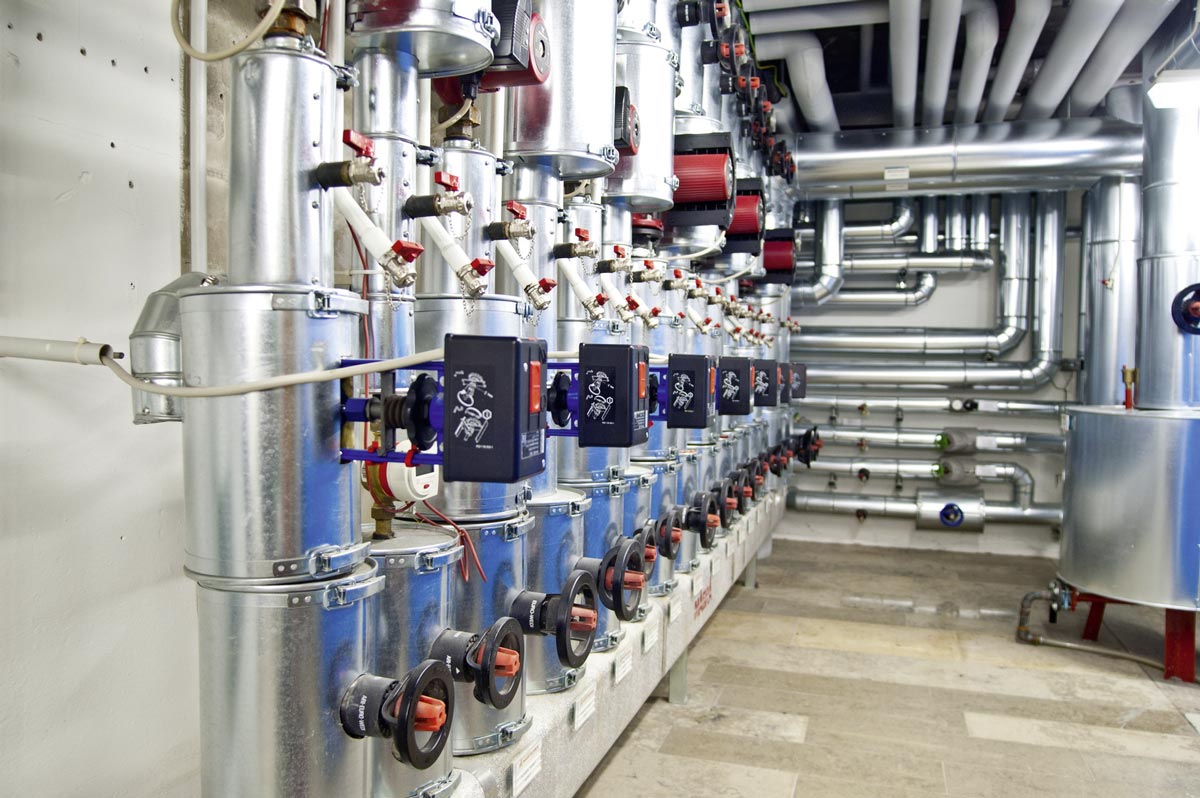High-temperature district heating is often not an economical way of meeting the modest demand for heat in passive and low-energy houses; in relation to the heat consumed in the buildings, the amount of heat wasted in the network is too high, as is the investment cost. Low-temperature district heating networks can provide an alternative way forward here; reduced supply temperatures in the district heating network cut heat losses and the cost of investing in the network, and make it possible to use renewable sources of energy and waste heat from industry.
As part of the project NextGenerationHeat, AIT is developing technical approaches to using sources of heat at temperatures between 35 °C and 65 °C, such as ambient heat with heat pumps, waste heat from industry, or the return flow from conventional district heating networks, to provide space heating and hot water in district heating networks. These approaches will be assessed from an economic and ecological point of view in four representative regions (Güssing, Vienna, Wörgl und Graz).
In the low-temperature networks under review here, roughly 20 to 75 % primary energy can be saved in comparison with boilers running on biomass or gas. CO2 emissions are roughly 25 to 85 % lower than with fossil sources of energy. In the overall assessment, though, using the return flow from the district network as supply for the low-temperature network is a challenge. Because the return flow cools down, various different effects (varying with grid topology and production technology) occur; these are hard to quantify, particularly in complex grids with several different CHP facilities.
Low-temperature district heating can run into problems if the requirement is to supply hot water with an inflow temperature below 65 °C and to store it. This temperature is the minimum essential to kill legionella bacteria (a health threat to human beings) in hot water. One focus is thus on developing technical procedures for providing hot water at low inflow temperatures hygienically. In particular, using suitable heat pumps to raise the hot water to the requisite temperature level at the substation is the subject of investigation.
Dynamic network simulation can be employed to evaluate hydraulic circuits (generator or grid-side) and substations, and the complex interactions in the overall system can be modelled. The project team works out monitoring strategies and preliminary business cases for variants that make technical and economic sense.

„As it is hard to tell where prices are heading, and differing sectors are competing for fuels more and more, district heating faces a process of fundamental transformation. It will be increasingly necessary to tie in alternative sources of heat, such as solar, geothermal, ambient heat via heat pumps, and waste heat from industry; in many cases these sources are purely local, have a low temperature level and are unregulable time-wise. AIT is developing scientific methods and advanced simulation tools to assist the operators and planners of district heating networks, and manufacturers of relevant components, in coping with these challenges. This includes assessing district heating networks and identifying potential for improvement, analysing the technical potential of alternative sources of heat, developing ways of lowering system temperatures (as in the projects NextGenerationHeat and URBANcascade, for instance), integrating storage tanks and heat pumps hydronically and in terms of control engineering, and working out intelligent operating strategies and control algorithms.“
Ralf-Roman Schmidt,
AIT Austrian Institute of Technology GmbH
